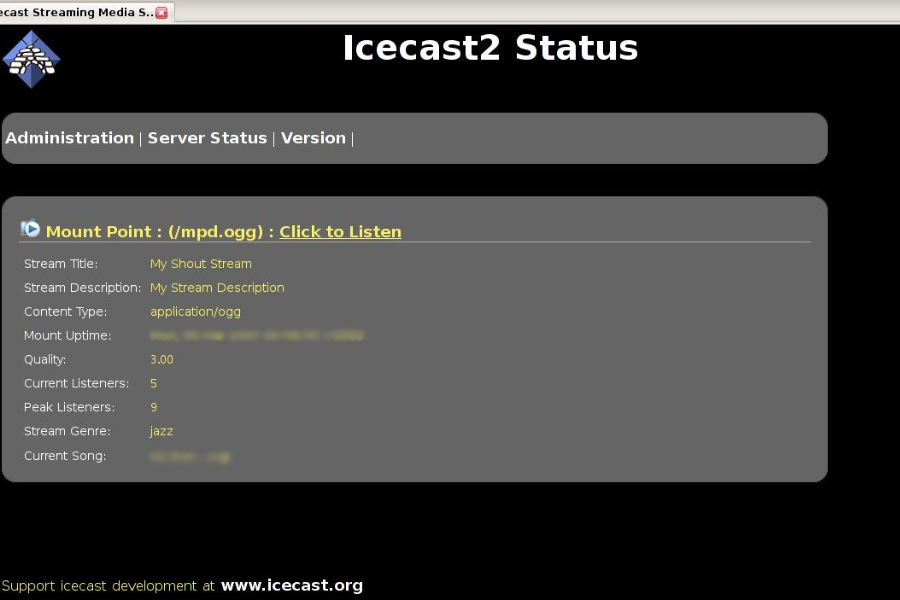Introduction
In the ever-evolving landscape of digital media, icecasting has emerged as a niche but fascinating broadcasting method. While the term might initially evoke images of frozen landscapes or winter sports, icecasting actually refers to a specialized form of live audio streaming over the internet. This article explores the origins, technology, applications, and future of icecasting, offering a comprehensive look at this unique broadcasting medium.
What Is Icecasting?
Definition and Basics
- Icecasting is a method of streaming audio content over the internet using the Icecast protocol, an open-source technology.
- Unlike traditional radio broadcasting, icecasting operates purely in the digital realm, allowing for global reach without the need for physical transmission towers.
- It supports various audio formats, including MP3, Ogg Vorbis, and AAC, making it versatile for different streaming needs.
How It Differs from Traditional Broadcasting
| Feature | Icecasting | Traditional Radio |
| Transmission | Internet-based | FM/AM waves |
| Reach | Global | Local/Regional |
| Cost | Low (server-based) | High (towers, licenses) |
| Content Control | Full customization | Regulated |
| Interactivity | High (chat, requests) | Limited |
The Technology Behind Icecasting
The Icecast Protocol
- Developed in the late 1990s, Icecast is an open-source streaming server software.
- It allows users to broadcast audio in real-time, similar to Shoutcast but with more flexibility.
- Supports multiple simultaneous streams, making it ideal for internet radio stations.
How Icecasting Works
- Source Audio – A broadcaster inputs live or pre-recorded audio.
- Encoder – Software (like BUTT or Mixxx) compresses the audio into a streamable format.
- Icecast Server – The encoded stream is sent to an Icecast server.
- Listener Access – Users connect via media players (VLC, Winamp) or web browsers.
Key Advantages
✔ Low Latency – Near real-time streaming.
✔ Scalability – Can handle thousands of listeners.
✔ Open-Source – Free to use and modify.
Applications of Icecasting
1. Internet Radio Stations
- Independent DJs and stations use icecasting to bypass traditional radio regulations.
- Examples: Underground music stations, community broadcasts.
2. Live Events and Podcasts
- Musicians, talk shows, and conferences stream live with interactive features (chat, donations).
3. Corporate and Educational Use
- Companies use icecasting for internal communications.
- Universities stream lectures and seminars globally.
4. Emergency Broadcasting
- Some organizations use icecasting for crisis updates when traditional systems fail.
Challenges and Limitations
1. Bandwidth and Server Costs
- High listener numbers require powerful servers, which can be expensive.
2. Copyright Issues
- Streaming licensed music without permission can lead to legal takedowns.
3. Technical Barriers
- Setting up an Icecast server requires some networking knowledge.
4. Competition from Modern Platforms
- Services like Twitch, YouTube Live, and Spotify Live offer easier alternatives.
The Future of Icecasting
1. Integration with AI
- AI could automate stream optimization, real-time translations, and content moderation.
2. Niche Revival
- As mainstream platforms become ad-heavy, icecasting may appeal to privacy-focused users.
3. Decentralized Streaming
- Blockchain-based solutions could make icecasting more resilient and censorship-resistant.
4. Enhanced Interactivity
- Future developments may include VR radio stations and immersive listener experiences.
How to Start Your Own Icecast Stream
Step-by-Step Guide
- Choose a Server – Self-host or rent from providers like Azuracast.
- Set Up Encoder Software – Options: BUTT, Mixxx, or Darkice.
- Configure Icecast – Adjust bitrate, max listeners, and security.
- Test Your Stream – Use VLC to check audio quality.
- Promote Your Broadcast – Share links on social media, forums.
Equipment Needed
- Microphone
- Audio interface (optional)
- Stable internet connection
- Encoding software
Conclusion: Is Icecasting Still Relevant?
While modern platforms dominate live streaming, icecasting remains a powerful tool for those who value control, privacy, and customization. Whether you’re an independent musician, a talk show host, or a tech enthusiast, icecasting offers a unique way to broadcast your voice to the world—without corporate restrictions.
As internet infrastructure improves and demand for decentralized media grows, icecasting could experience a resurgence. For now, it stands as a testament to the enduring appeal of open-source, community-driven broadcasting.



